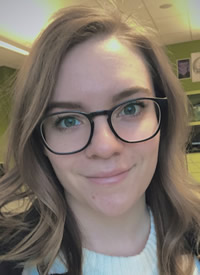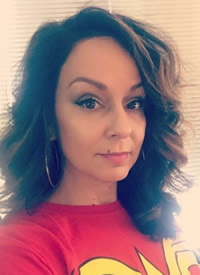Next Gen Navigator
Justice-Centered Science Pedagogy: Leaning Beyond the Boundaries of Equity and Culturally Responsive Practices
By Jordyn Frost and Anastasia Sanchez
Posted on 2020-05-26
Disclaimer: The views expressed in this blog post are those of the author(s) and do not necessarily reflect the official position of the National Science Teaching Association (NSTA).
The adoption of NGSS and three-dimensional science instruction has led to a much-needed shift from decontextualized science learning to phenomena-based learning. Many science educators are centering science learning on real-world phenomena. I, Anastasia, find that justice-centered science pedagogy empowers teachers to make science learning more inclusive of authentic student experiences and aligns well with NGSS.
I am a Seattle Public Schools District science curriculum specialist and University of Washington graduate researcher leading district-wide efforts to create adapted K–12 justice-centered science units through the district’s Social Focus Initiative. My colleague Jordyn Frost, one of eight case study teachers, has taken a leadership role in co-designing and teaching justice-centered seventh-grade Social Focus Initiative units.
Final Thoughts
Our collective social climate and goals of advancing science and science pedagogy, as well as responsibly serving youth, means we must push beyond culturally responsive add-on methods and three-dimensional science instruction boundaries. This is possible if we embrace restorative, dignity-conferring justice-centered science pedagogy.

Jordyn Frost is a seventh-grade science teacher at Denny International Middle School in Seattle, Washington. With a background in informal science education, Frost took her enthusiasm from the stage to the classroom by earning a master’s degree in teaching from the University of Washington. This allowed her to combine her passion for science education and social justice. She has been teaching the NGSS and phenomena-based instruction for five years. Frost has worked on teams in the Seattle Public Schools District to modify curriculum to be justice-centered and support the adoption of NGSS-aligned science curriculum at the elementary and middle school levels.

Anastasia Sanchez has taught in the Seattle Public Schools District since 2005. She began in a middle school classroom as a seventh-grade science teacher, later becoming science department lead, instructional coach, and eighth-grade teacher. Sanchez served as the language acquisition specialist and Race and Equity Committee Lead. As a science content demonstration teacher, she was inspired to serve students and teachers on a larger scale, which she now does as science curriculum specialist for SPS. Sanchez has earned a bachelor’s degree in biology from Northern Arizona University and a master’s degree in education. She is currently a doctoral student in the University of Washington’s College of Education’s Learning Science and Human Development Program.
Note: This article is featured in the May 2020 issue of Next Gen Navigator, a monthly e-newsletter from NSTA delivering information, insights, resources, and professional learning opportunities for science educators by science educators on the Next Generation Science Standards and three-dimensional instruction. Click here to sign up to receive the Navigator every month.
The mission of NSTA is to promote excellence and innovation in science teaching and learning for all.
Equity NGSS Professional Learning old Three-Dimensional Learning Middle School


